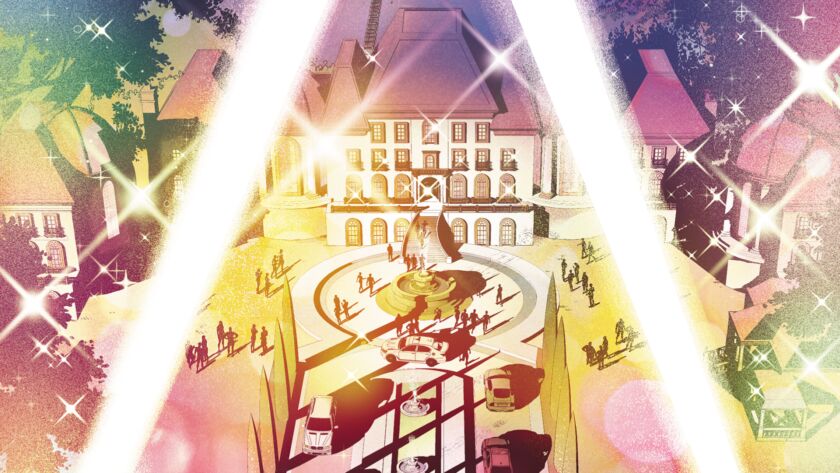
It’s long been said that your favorite books, films, and other media are as queer as you want them to be.
A close read of the right passages, through the right lens, can reveal themes that resonate across generations, identities, and experiences. That’s what makes a classic.
One such favorite novel to many, The Great Gatsby, is almost 100 years old, and is often examined with queer themes in mind, especially when it comes to its narrator, Nick Carraway.
Like many of us who finally got around to reading those dusty paperbacks on our shelves during the pandemic, writer Jeremy Holt finally picked up The Great Gatsby during the COVID lockdown. On their first reading, they immediately fell in love with its flawed characters, and began to wonder what this story could look like in a new context, from the perspective of teenagers in the 2020s, 100 years later.
As a nonbinary Korean American, Holt pulled from their own experiences to spotlight queer communities, multicultural narratives, and authentic representation set against the familiar backdrop of Long Island, NY, in their new graphic novel, Gatsby, a “multicultural thriller for the internet age,” which hits shelves in comic book stores May 10, and all other bookstores May 30.
We caught up with Jeremy to talk all about Gatsby, and what it means to reimagine a beloved classic.

Hi Jeremy! Thanks for being here. Tell us about the process of looking at this classic, The Great Gatsby, through a queer lens.
I’m a Korean adoptee, and a non-binary person. For the longest time in my career, I’ve spent probably more than two-thirds of it writing these white male savior stories. And I was writing these stories because I felt that a caucasian protagonist was my narrative.
Having been raised by white parents and having not explored my own identity as an Asian person really put me in these trappings that I wasn’t aware of. So in 2017, I decided I was done with that. I decided that I wanted to write stories that were more authentic to myself. My goal was to provide better representation since I’m in this unique position …that I’m allowed to create characters that look more like me.
And it was also happened with the year that I came out as non-binary. So I was working on all these other projects, and I was looking at the work I had been doing, and I was surprised that all of them were just white characters. And as soon as I started changing that, the narratives became more interesting and the discussions, and the character development, and the story arcs became more interesting…
And in that time, I was also trying to read as much as I was writing. And Gatsby was one of those books that I’d never read, and it was just on my list. And I read it, and I was actually really surprised with how relevant it still felt.
Related:
17 LGBTQ+ books we can’t wait to add to our shelves in 2023
Exciting debuts, fascinating memoirs, and plenty of eagerly-awaited releases from beloved queer writers are headed your way in the next year.
It was so jarring to me that… I completely shifted gears. I initially wrote Gatsby as a young adult prose novel. And that wasn’t great, but it was like getting that first sketch out of your system. And that book didn’t go anywhere, but I was still in love with the idea. And looking back on it, that book didn’t take a lot of risks. I was basically just doing a light fanfic of Gatsby, just with some light diversity, but the diversity wasn’t the focus. So when I decided to shift gears even further and do it as a graphic novel, I thought, this is my chance to really lean in.
And I didn’t want to change the major plot moments in the book that make it Gatsby, but I thought by de-aging the characters, I would inherently have to pivot narratively to get to those milestones. And so that was the fun challenge, and it was also really fun to see if a 21st-century Gatsby could exist, what with the advent of the internet and social media and stuff.
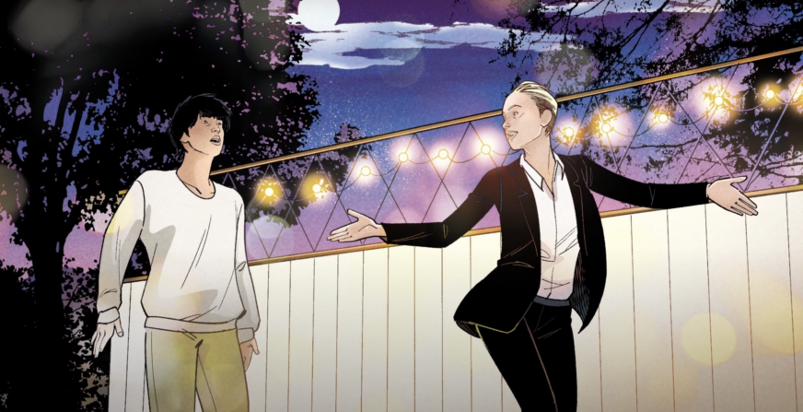
How did the queer element of the story evolve between versions, as you moved from prose to the graphic novel?
There wasn’t the queer angle [before]. I guess everyone’s hinted at or believed that the Nick character was in love with Gatsby. Having read the original book, I’d say half a dozen times now, I still don’t see it. I see that Nick could be viewed as queer, but I don’t see his love for Gatsby in that way. I see an admiration. I see inspiration, but there’s a passage in it where Nick flat out admits to himself that he finds Gatsby to be detestable. I guess one could argue that that’s the character’s own internal struggles.
So the original prose novel was just leaning on the fact that the protagonist or the narrator was falling in love with the Gatsby character, but to me that wasn’t interesting because it’s already been suggested and would’ve just been feeding into that long-held belief. And I wanted to do a really stark shift away from that, and really write it for people who aren’t necessarily interested in the original text, but the ones that can see how they relate.
For this book, my goal was to provide a proper representation for a culture and a society that reflects the American dream I want to live within. And I know that America has its problems, but I also wanted to explore my feelings about those problems. I wanted to create a world where people like myself at a young age or an impressionable age could see themselves, because for me, the representation wasn’t there.
And so I was having to do the mental gymnastics of trying to relate to people that didn’t look like me. I’m sure a lot of queer people have read Gatsby projects that are longing to fit into that world, even though it wasn’t explicitly written that way. And I want to just make that easier for people. I want it more accessibility in that way for people to read this book and go, “That’s me,” or, “That’s my friends.” Or just be like, “I would love to live that lifestyle,” because the wealth porn in Gatsby is really intoxicating and shows like The OC and Gossip Girl certainly help show that it’s still an interest and we still want to get a glimpse into the rich and famous, and I don’t think that’s ever going to change anytime soon either.
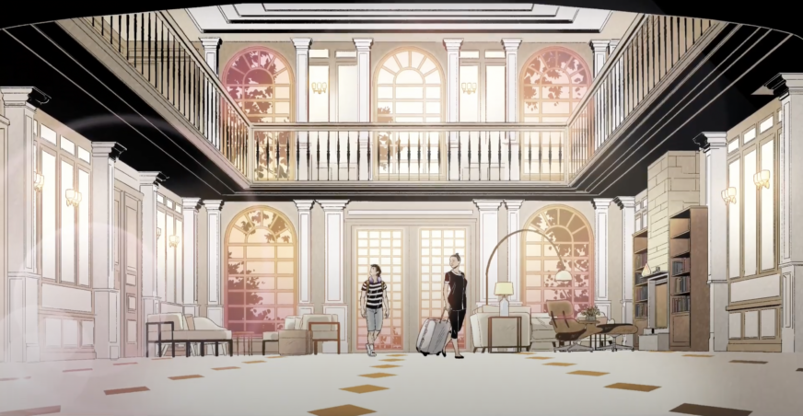
What do you hope a new audience will take from this modernization of a classic?
The recurring themes that stuck out almost immediately from reading the book were the American dream and the power of reinvention. And, for me, I’ve grappled with my identity in various ways throughout my adult life. And the book got me thinking about, “What does the American dream look like to me now? What does it look like to POC and queer people?” And also, that idea of reinvention. Gatsby had it easy because there was no internet. You could just say who you are and you didn’t need to provide a lot of documentation.
And then you add this excessive wealth, you can hide yourself even further. And when I started looking at that, I started looking at the character of Gatsby and seeing how to assimilate him into the 21st century, and it was actually surprisingly easy. So I thought, “Okay, there’s a story here.”
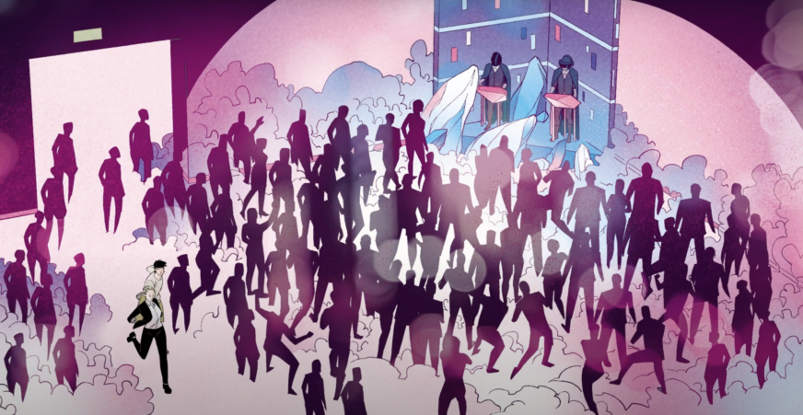
What was the biggest challenge in bringing it all to life?
I think connecting the narrative milestones that make the book so beloved. When you de-age the characters, I had to change some of the relationships both purposefully and out of necessity. So the George and Myrtle Wilson characters, because they’re younger, it didn’t make sense for them to be husband and wife, so I made them brother and sister.
And when you make these changes to get to those milestones, it almost feels like there’s more detours that occur. So the challenging part was getting to the end. We all know Gatsby’s fate, but to get there, I realized I’d written myself these very circuitous routes for the characters that at one point I was like, “I can’t get it to the end—I can’t get them to the end. I don’t know how to bring this all back together and how to have the Daisy character be the impetus for Gatsby’s demise, and how do I do this with these new characters and these new relationships?”
The reinvention really is what I think will stand the test of time. It’s also a very personal thing for me because living overseas half my life, I was moving constantly because of my dad’s job. And something my mom would say to us every time we enrolled in a new school, she’d say, “This is the time to reinvent yourself. You can be whoever you want to be.”
And so when I read Gatsby, that’s the first thing I thought, this advice that my mother had given me at such a young age. And little did she know that I would just run with that, and lean into it really hard. And it gave me the permission to explore myself in ways that I don’t think a lot of people do.
So I think the reinvention part, especially with social media, especially with avatars and the metaverse and VR, I thought that there was a really nice comparison to how Gatsby reinvented himself. But for this new retelling, I wanted to show that every character can reinvent himself.
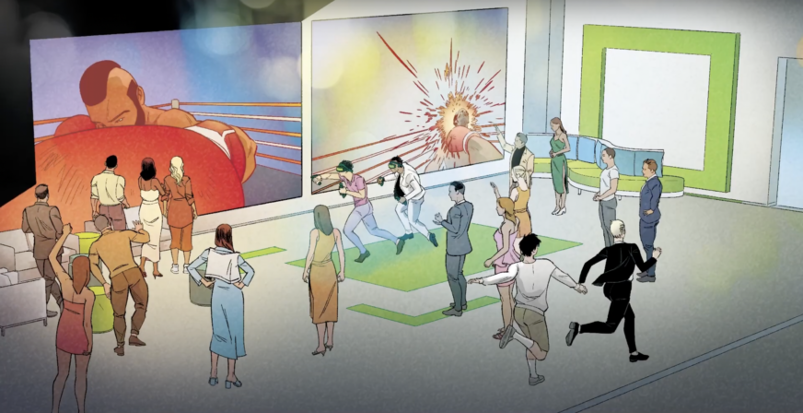
Thinking back to when you first had this idea to now being on the other side of it, what surprised you the most through the whole process?
I’m honestly just surprised that I finished it, to be honest. Again, there was a moment where I was so close to just writing my publisher and saying, “I can’t do this. I’ve bitten off more than I can chew. I don’t know what I’m doing.”
So to have finished it feels good, but for people to read it, and especially people who love the source material, to enjoy the retelling of it in a completely different context and still enjoy it is really a new goal of mine. Just like when I read it and I wanted to be in that world, I want to create a new version of that world where people want to revisit it for the next century.
And who knows, maybe in a hundred years someone else will retell this version of it and what is that going to look like? So it’s just paying that forward, passing the torch, keeping something like this alive.
Related:
The 10 best banned queer books worth adding to your library
New York Times bestselling author Ryan Douglass shares his list of the ten most crucial banned LGBTQ titles.
Gatsby is available now available from AWA and can be ordered via Simon & Schuster. Scroll down below to preview an excerpt:
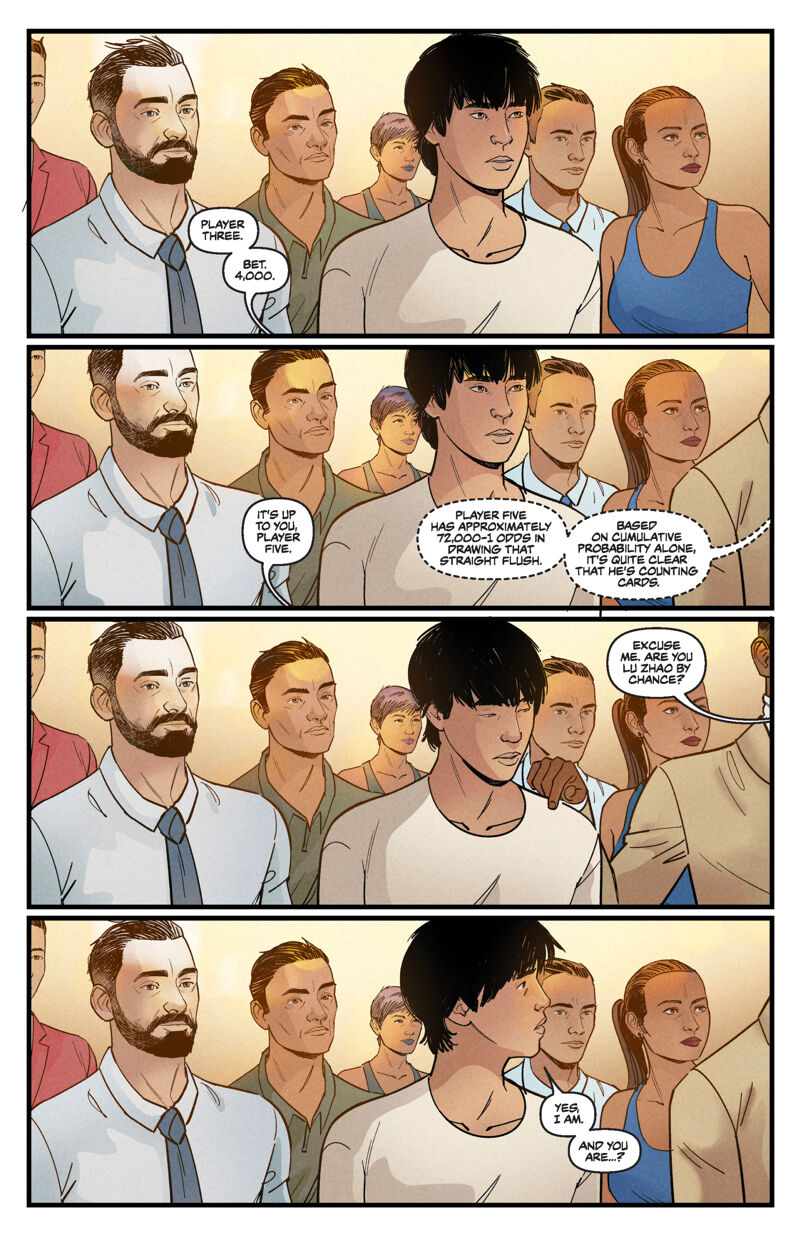
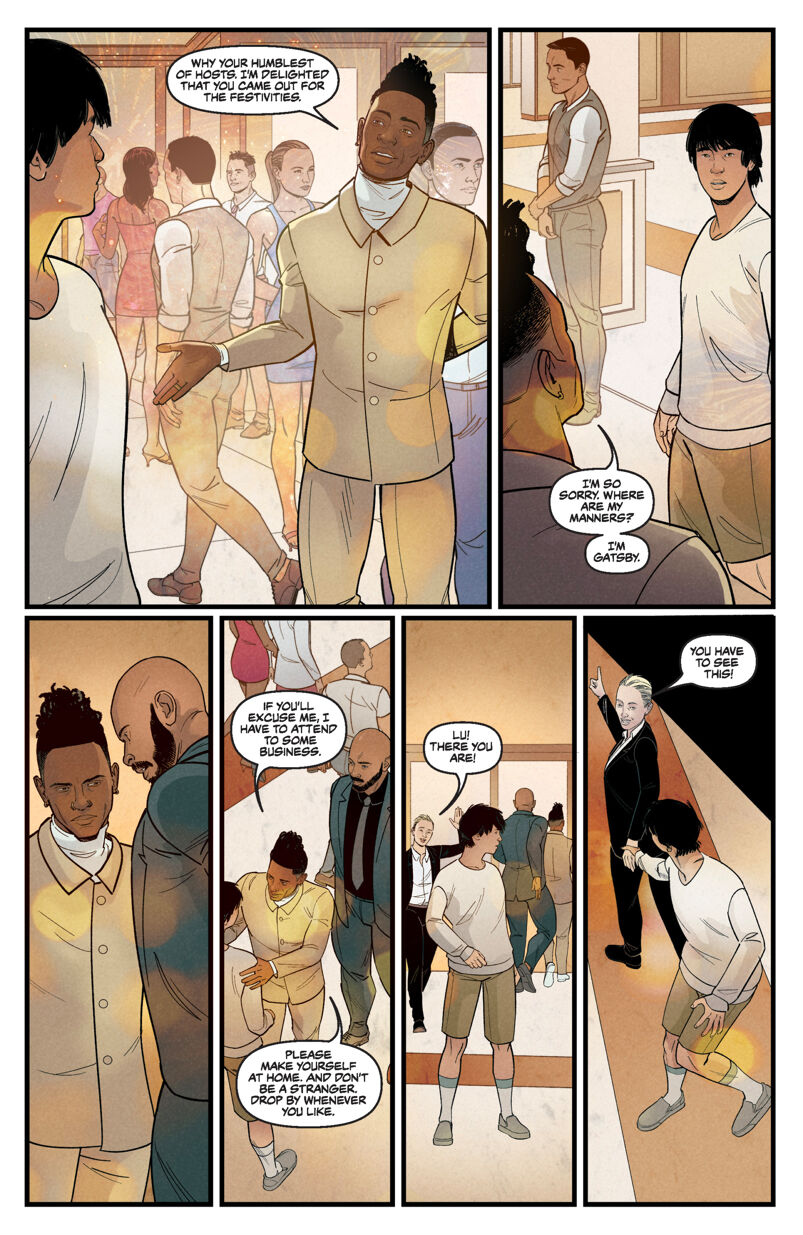

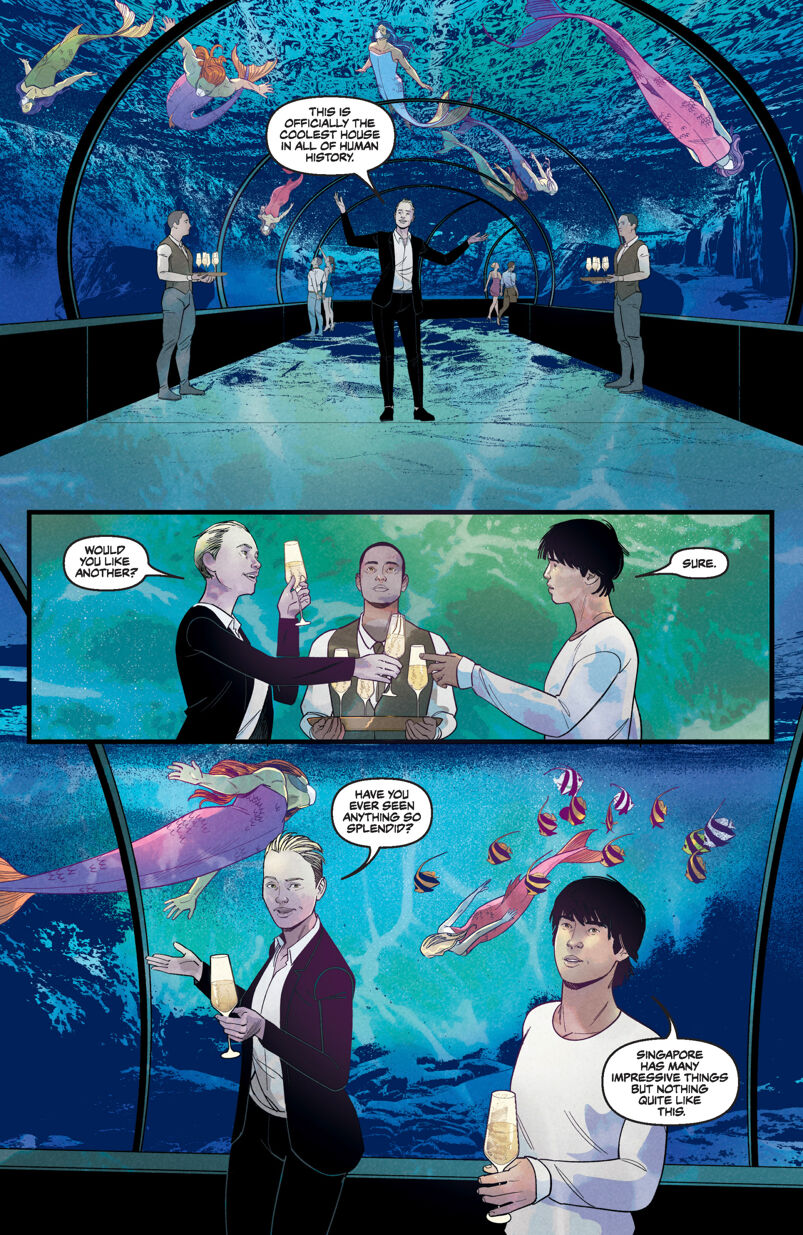
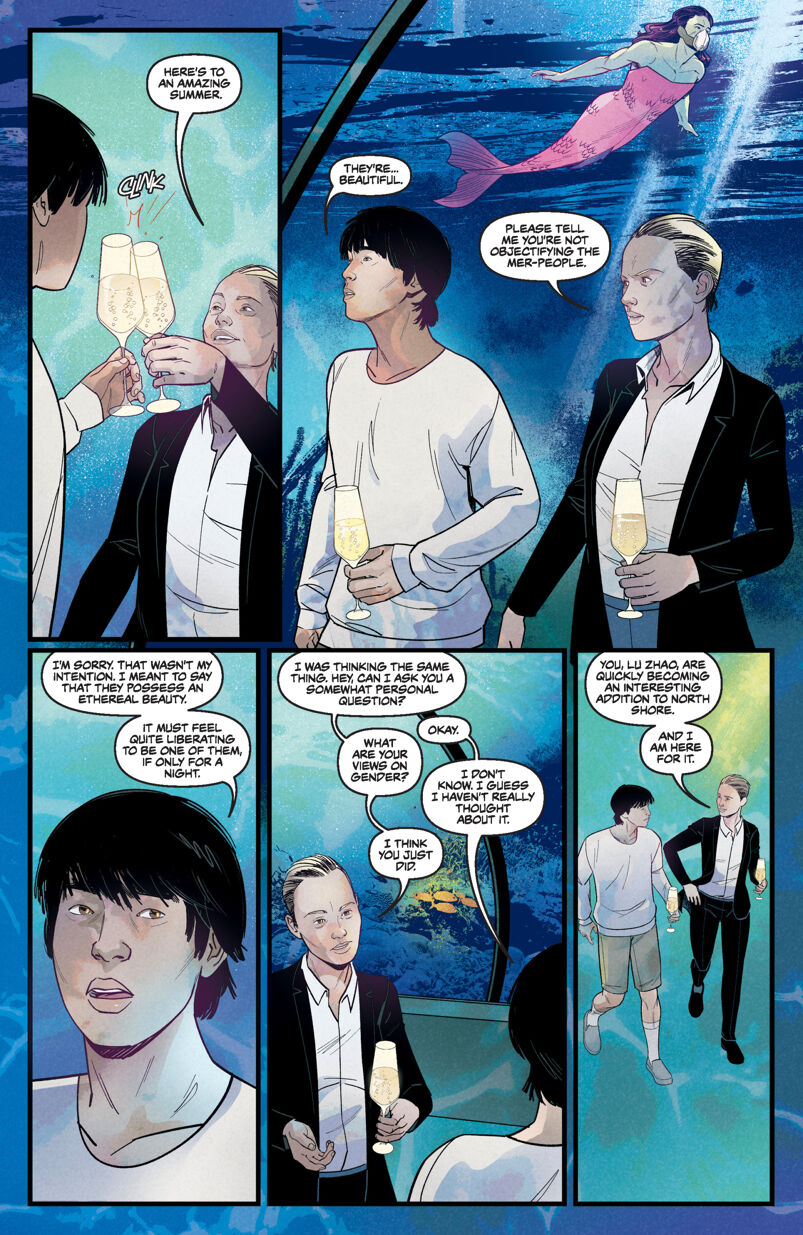

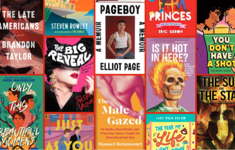


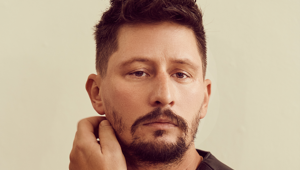

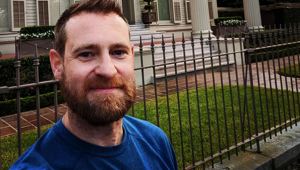



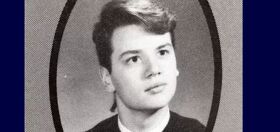

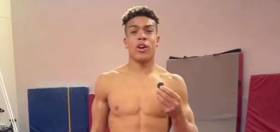







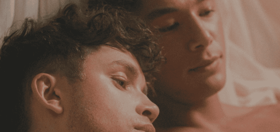


Pietro D
Dream On!
Kangol2
While I’m not going to trash this adaptation because I haven’t read it, and while I understand the author’s desire to update a classic, I’ll just say that The Great Gatsby is one of the greatest works of American literature, written with utmost care, full of contemporaneous and contemporary social commentary, and worth reading by every American child and adult.
No adaptation, however entertaining (and there have been several), in a range of genres from film to opera, has come close, so return to Fitzgerald’s masterpiece, full as it is of White people (and he’s critical of a number of them, especially the rich ones, including *SPOILER* the Buchanans and Gatsby himself).
correctio
yeah, that’s why they teach it to middle schoolers. the problem isn’t with TGG. It’s with the fact that this novel ends up being one of the few works of literature than people read ever in the course of their otherwise illiterate lives
personally, I prefer Bret Easton Ellis’ American Psycho or Cormac McCarthy’s Blood Meridian. Some good stuff by Willa Cather. Oh, and don’t forget the Bridge of San Luis Rey by Thornton Wilder, a gay man
ShaverC
Just from reading the few panels that were shown, it is probably very boring. Any book that is preaching will always be boring (“Please don’t tell me you’re objectifying the mer-people”) LOL
correctio
lol indeed. just imagine someone asking you, “what are your views on gender” as they try to seduce you. might as well fall in love with a chatbot
Joshooeerr
Listen carefully and you’ll hear F. Scott Fitzgerald turning in his grave. Yes, there are many, many novels in which the gay character or story is subtext only, or coded, or even the unconscious result of the author’s own desires. But The Great Gatsby is not one of them. Fitzgerald was very precise about what he wrote and what he inferred. If he’d wanted Nick to be in love with Gatsby (as opposed to intrigued, impressed, charmed, etc) it would have been very clear.
Jeffrey
There are a number of scholars who question if Nick might be gay. His descriptions of men and women were one clue. He describes women in a sentence and goes into detail about the men he sees as they are introduced into the book. If Fitzgerald was very precise in his language, then he certainly meant for the difference in description to mean something too.
jackolighter
Agreed that Fitzgerald was precise about his word choice. He had to be; it was the 1920s, and any explicit mention of gay relationships would have been deleted to appease censors. (Even Hemingway’s A Farewell to Arms was censored for making the sex too explicit, and that was a heterosexual relationship.) But back to Fitzgerald’s precision. He was precise about the closing of Chapter 2 in Gatsby, when Mr. McKee invites the narrator Nick to lunch: “Where?” Nick asks. “Anywhere,” the character replies. Nick agrees, and after a scene skip, they’re in Mr. McKee’s apartment, Mr. McKee is in his underwear, and Nick has to leave to catch the 4 AM train. This is as much gay sex that Fitzgerald could have included in the 20s without risking censorship. So, we have a narrator who for sure has sex with men, who begins the book with a two-page monologue about his disillusionment with all of mankind, save for the sole exception of Gatsby. True, it’s not an explicit declaration of love– but in this time period it couldn’t be, and with a book that contains as many subtleties as Gatsby, it doesn’t have to be.
Steve
My comments are not posting?
Steve
And then I said you can read it for free on Inkitt.
correctio
“The recurring themes that stuck out almost immediately from reading the book were the American dream and the power of reinvention”
glad to know that people are still using sparknotes
Steve
Oh, I see, my comment is awaiting moderation. I wonder why? Please kind moderator, please share with us what causes our comments to be held up for moderation. I am pretty certain I have violated no codes of conduct in recommending other novels to readers in this post and where to find them as part of my approach to 1) applaud Queerty for adding some stories about novels which I think are an often-overlooked form of entertainment on Queerty, and 2) make an offsite recommendation where Queer people can find some queer literature, for free, that they might like to know about and read. However, If I have broken rules or offended, please forgive me. Alas, neither would be my intention as an avid fan of this site.